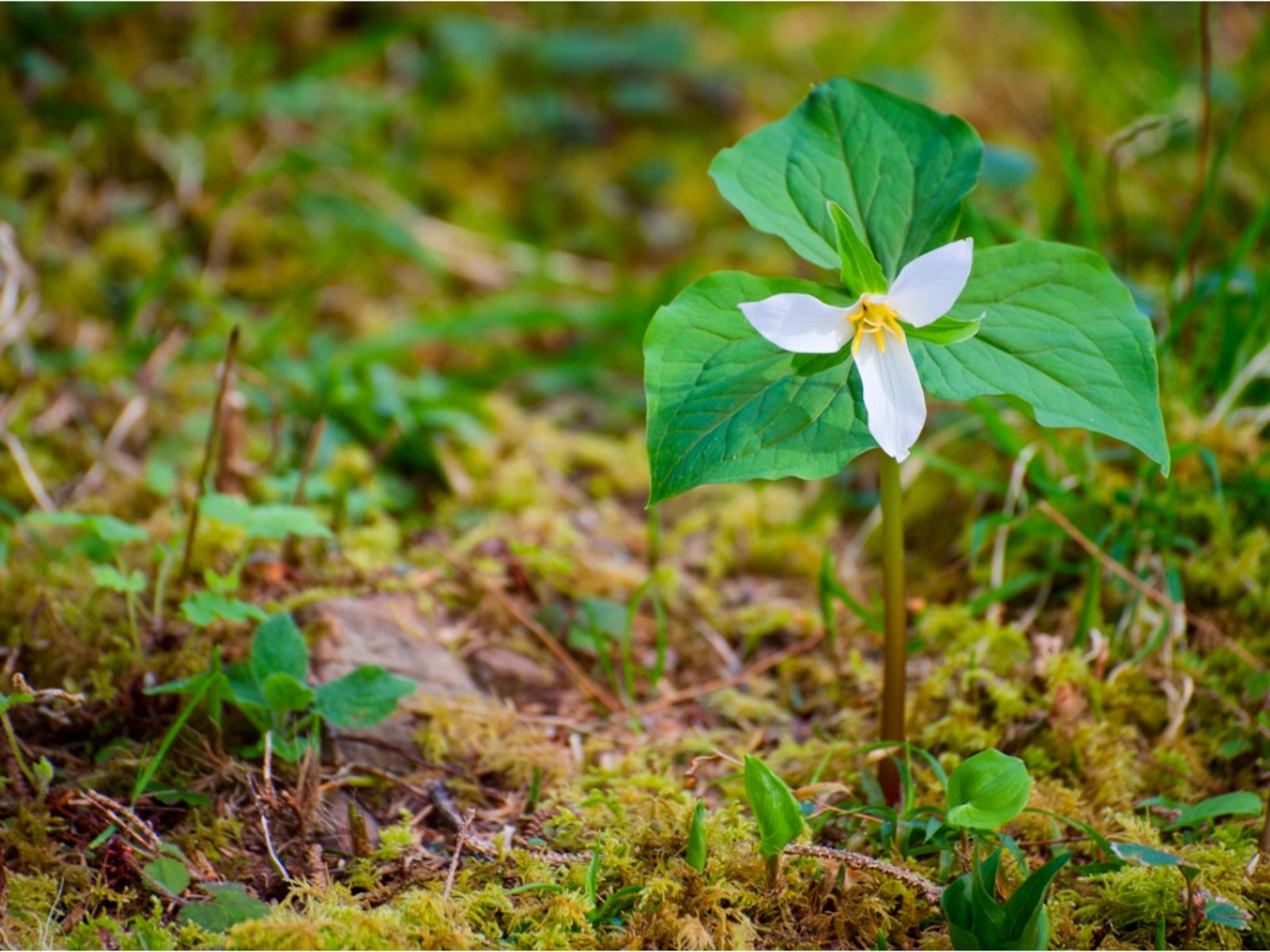Wildflower Trillium - Growing Trillium And Care For Trillium Flowers


Growing Trillium Plants: How To Plant A Trillium
Trillium wildflowers are a sight to behold not only in their native habitat but also in the garden.
Native to temperate regions of North America and Asia, these early spring bloomers are easily recognized by their whorl of three leaves and showy flowers. In fact, the name itself derives from the fact that nearly all parts of the plant come in threes-- three leaves, three flower petals, three blooming characteristics (upright, nodding, or drooping), and three-sectioned seedpods.
Another interesting name for this plant includes wake robin, which is said to be for the timing of its flowering, which usually appears with the arrival of spring robins.
Types of Wildflower Trillium
With well over 40 trillium species, flower color varies anywhere from white, yellow, and pink to red, maroon, and nearly purple. Some of the most common varieties grown include:
- White trillium (T. grandiflorum) - This type has nodding, white flowers that age into bright pink blooms atop wavy, dark green leaves.
- Toadshade trillium (T. sessile) - This species exhibits red or purplish upright flowers surrounded by maroon and green mottled leaves.
- Yellow trillium (T. luteum) - This variety displays upright gold or bronze-green flowers on variegated green leaves and emits a sweet citrus-like scent.
- Purple or red trillium (T. erectum) - Also known as stinking Benjamin, this one has attractive, nearly purple flowers that smell of rotting meat.
Growing Trillium Plants
Trilliums bloom early and become dormant by midsummer, yet with suitable growing conditions they are easy to care for and long-lived in the garden. In order for them to thrive in the home garden, you must mimic their native habitat by providing moist, well-draining soil enriched with organic matter. These perennial wildflowers are ideal for shade gardens and wooded wildflower gardens. They make excellent companions for similar woodland wonders like crested iris, jack-in-the-pulpit, hosta, toad lily, and ferns.
How to Plant a Trillium Wildflower
Trilliums do not transplant well from the wild and many are actually endangered; therefore, they should be purchased from a reputable nursery that specializes in their care.
They can also be propagated from seed, though flowering will not occur right away. In fact, it can take up to four or five years to see blooms. Collect seeds in late June or early July when the seedpod has turned from white to russet brown. Sow the seeds immediately or store them in damp peat moss and refrigerate until ready for planting in a shady outdoor seedbed. The area should be enriched with plenty of humus, or compost, and kept evenly moist throughout the growing season. Seeds will not germinate until the second year.
Gardening tips, videos, info and more delivered right to your inbox!
Sign up for the Gardening Know How newsletter today and receive a free copy of our e-book "How to Grow Delicious Tomatoes".
Trillium plants can also be propagated by rhizome cuttings or division when the plant is dormant, either in fall or late winter (prior to new growth). Cover the tuber-like rhizome with at least 2 inches (5 cm.) of soil and space plants about 10 inches (25 cm.) apart.
Care for Trillium Flowers
Once established in the garden, trillium wildflowers require little maintenance or care. As long as they have been planted in a suitable location, you need only keep the soil evenly moist, but not soggy. They may also require water in dry weather. Fertilizer is not necessary as long as they have plenty of organic material or compost mixed into the soil. You can, however, renew this each year if desired.

Nikki Tilley has been gardening for nearly three decades. The former Senior Editor and Archivist of Gardening Know How, Nikki has also authored six gardening books.
-
 Moody Blooms For Spring: 8 Types Of Black Flowers To Add Drama To Spring Displays
Moody Blooms For Spring: 8 Types Of Black Flowers To Add Drama To Spring DisplaysFrom midnight burgundies to inky violets, several types of black flowers can enrich and embolden a spring display. Try these brooding bloomers for a moody garden
By Tonya Barnett
-
 My Homemade Orchid Fertilizer Always Brings More Blooms – Here's The Easy Recipe That Transforms Plants
My Homemade Orchid Fertilizer Always Brings More Blooms – Here's The Easy Recipe That Transforms PlantsScientist-turned-gardener Mary Ellen Ellis shares her tried-and-tested DIY orchid fertilizer recipe, plus more ingredients to try for healthy, happy plants.
By Mary Ellen Ellis